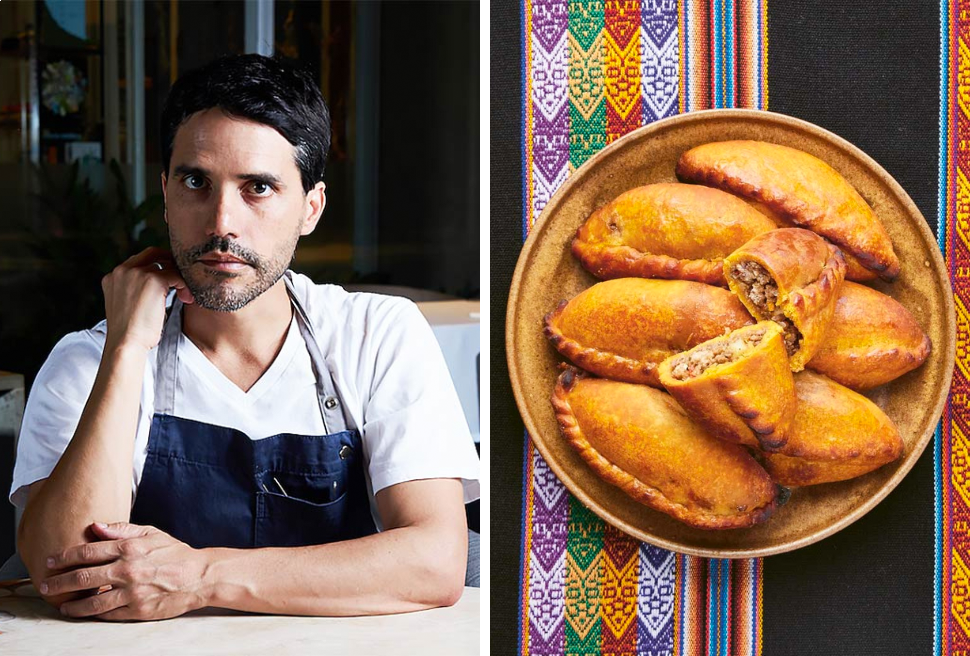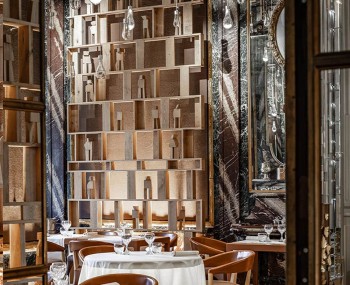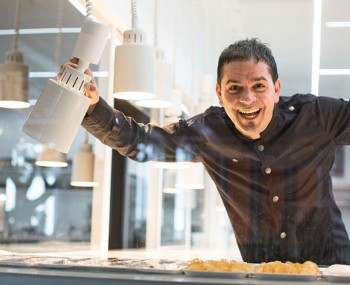The great Peruvian chef Virgilio Martinez attempted the impossible feat of codifying the cuisine of an entire continent, interviewing elders in villages and anthropologists with his large team. In doing so, he discovered a treasure trove of forgotten recipes, such as the salteña, a typical Bolivian empanada.
Virgilio Martinez Baked Empanadas
The story
It may seem like an impossible challenge to encode the cuisine of an entire continent. However, Peruvian star chef Virgilio Martinez attempted it with the help of Phaidon. The result is called The Latin American Cookbook, which also reviews lesser-known cuisines and specialties. In total, there are six hundred recipes from twenty-two countries collected over several years by interviewing elders in villages, anthropologists, and homemakers and consulting existing literature. @Ken Motohasi
@Ken Motohasi
"This book shows how proud we as Latinos are of our culture. Many of us have participated,” says the chef, who has always been an interpreter of the most unknown parts of Peru and here has widened his focus without changing his approach. "I have made many friends, and I have many who have supported the project. I was surprised to discover how everyone looks at their own region and have become involved without receiving anything in return. It is an act of sharing, which embodies the very purpose of cooking and puts us in a positive relationship." @Ken Motohasi
@Ken Motohasi
In his opinion, the appeal of Latin cuisine lies in the mix of cultures resulting from the encounter between indigenous and European cultures, followed by Chinese, Japanese, African, and Arabic... "Something that continues to evolve in our culture and in our food." Hence, the Bolivian empanadas. @Jimena Agois
@Jimena Agois
The dish
"I think they are the result of the country's history. The taste speaks of the different flavors across regions, and the recipe has been adopted in every part of Latin America and around the world. There's this wonderful tactile sensation in hand and the comfort of knowing you will find it in even the humblest places. Argentinian empanadas are fried, while Bolivian and Peruvian ones are baked, but even the dough varies. The Argentinian ones are more elegant in finishing, while the others are more rustic, spicier and have a greater variety of fillings. The former tends to have more intense flavors and are closely linked to asado.”
 @Jimena Agois
@Jimena Agois
The story is well-known: the specialty, characterized by a braised filling and called "salteña" from the Argentinian city of Salta, but of Bolivian origin, was born during the dictatorship of Juan Manuel de Rosas in the 19th century, when the writer Juana Manuela Gorriti, originally from Salta, was exiled to Potosì, across the border, and turned to cooking to make ends meet. From there, the recipe spread throughout the country and beyond, with increasingly varied fillings. The typical accompaniment is a llajua sauce made with chilli pepper and tomato.
Virgilio Martinez's Baked Empanadas Recipe
 @Jimena Agois
@Jimena Agois
Ingredients
For the dough
650g of flour
2 tablespoons of sugar
250g of melted butter
2 egg yolks
120 ml hot water
½ a teaspoon of sea salt
Method
Mix flour and sugar in a large bowl. Pour in melted butter and stir with a wooden spoon. Incorporate the egg yolks, then gradually add the slightly salted hot water. Knead by hand to obtain a soft and smooth dough, then roll it out with a rolling pin on a floured surface to a thickness of 3 mm.
For the filling
120 ml melted lard
2 finely chopped white onions
1 yellow chilly, minced
450 g minced beef or chicken
1,2 l beef stock
1 sheet of gelatin softened in cold water
3 tablespoons minced parsley
6 boiled potatoes, cubed
130 g cooked peas
Salt and pepper to taste
Method
Heat the lard in a large skillet. Sauté the onions and fresh chilli pepper in it for 8 minutes, until softened and have taken on some color.
Add the meat, then pour in the broth and incorporate the squeezed gelatin. Let simmer for 35 minutes.
Add the parsley, salt and pepper, then remove from heat.
Add the potatoes and peas, then refrigerate until ready to use.
To bake
1 beaten egg for brushing
Method
Preheat the oven to 180°C. Use a pastry cutter to make circles with a diameter of 11 cm, place them on a baking tray lined with parchment paper. Put a tablespoon of filling in the center of each circle. Moisten the edges with your fingers, fold in half and seal.
Brush with beaten egg and bake for 15 minutes until golden brown.












